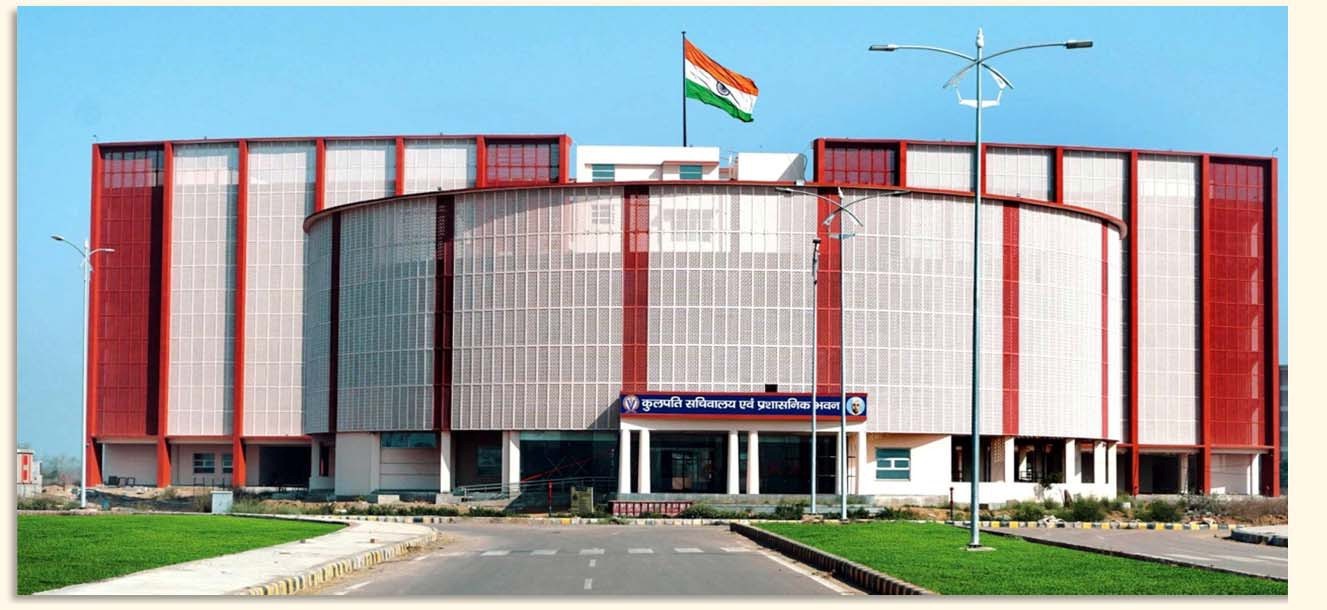
An independent University of Veterinary and Animal Sciences has been established w.e.f. 1.12.2010 in pursuance of the Haryana Act No. 7 of 2010 notified on 7th April, 2010. The new University has been named in the cherished memory of Lala Lajpat Rai, a great patriot, the foremost freedom fighter, an ardent social reformer and a versatile writer. Lala Lajpat Rai, popularly known as “Punjab Kesri”, did his early legal practice at Hisar and also served as a Member and Secretary of the Hisar Municipality. The College of Veterinary Sciences and the College of Animal Sciences, earlier the constituent colleges of CCS Haryana Agricultural University, Hisar has now been incorporated in this newly established University. The college of Animal Sciences is merged into College of Veterinary Sciences. The College has a glorious history of more than 60 years, since it was shifted to Hisar from Lahore (Pakistan). It is backed by an enviable tract record of academic excellence, cutting edge research and rendering quality services to the livestock of the state. An extensive network of alumni occupying important positions throughout the world is a source of inspiration, enthusiasm and commitment to hard work for the faculty and students.
Animal rearing has been life line of “Haryanvi” culture since time immemorial. The State has an important place in the dairying map of India. The state’s rich livestock wealth is mainly represented by the Murrah buffalo, a triple purpose animal, popularly known as the “Black Gold” of India in addition to the famous breeds of cattle including Hariana and Sahiwal. The superior quality of livestock is evident from the fact that with just 2.5% of the country’s bovine population, Haryana contributes more than 5.5% of milk to the national pool. The per capita availability of milk in the state is almost 2½ times of the national average. The contribution of livestock sector to agricultural GDP of the state exceeds 30% and livestock continues to be a sustainable source of livelihood and the only asset for millions of the rural families.
In spite of the impressive contribution and growth, the sector has not kept pace with increasing human population, urbanization, rising income levels and the heavy demand of the National Capital territory being next door. The gap between supply and demand of milk and its products is expected to widen further unless urgent measures are undertaken to harvest the full potential of this giant sector by significantly improving the productivity of our animals. At present, our per animal productivity stands nowhere as compared to international standards. The sector is rightly referred to as “the sleeping giant” or a “hidden treasure”. The poor performance of the sector, in spite of its huge size and rich resources, could be broadly attributed among other factors to :
It is without saying that the creation of this independent University of Veterinary and Animal Sciences would give the long awaited impetus to this sector and make an enduring contribution to social justice and equality by improving the living standards of our animal owners, most of whom belong to the under- privileged segment of the society.
Objectives : The major objectives of the new university are :
Existing infrastructure :
Presently the University is located in the campus of CCS Haryana Agricultural University, Hisar. It has adequate facilities and infrastructure for the basic degree in Veterinary Sciences (BVSc. & AH) as well to provide quality education for post-graduate degrees of MVSc, and Ph.D. in all disciplines.
A spacious Veterinary Clinical Complex is providing round the clock services for treatment and care of sick animals including referral services. The ambulatory clinic, central laboratory, animal research farm having different species of livestock and poultry and an excellent Disease Free Small Animal House are some of the other unique facilities with the University. The University is also running a two year Veterinary Livestock Development Diploma course and a two year Diploma Course for Veterinary Laboratory Technician. The main building of the college is more than 50 years old with little scope for expansion. The University also has seven disease investigation laboratories situated at strategic locations in the state to provide diagnostic services to livestock and poultry farmers and to strengthen surveillance of various emerging and existing diseases. The Haryana Pashu Vigyan Kendra at Uchani (Karnal) is proving referral clinical services to North and Eastern region of the State.
New Campus :
The Government of Haryana has allotted a piece of land measuring more than 1000 acres on Hisar – Chandigarh National Highway (4 km from Hisar town) to raise an ultramodern new campus of the University for which foundation stone has already been laid on the auspicious day of 15th August, 2011. The new campus is intended to be environmental friendly, energy efficient based on vertical expansion and green building Concept.
The new Campus is being seen as a “once in life time” opportunity. It is being planned with 2030 vision in mind. The Campus will be self-sufficient with respect to the infrastructure and facilities for teaching, research, sports, recreational, residential, utilities, amenities and misc services etc. In addition, it shall have centralized, inter-disciplinary, common facilities for teaching and research to make the working environment more interactive, friendly, efficient and economical.
Future plans :
The University has growth plans by adding other allied faculties of Fisheries, Dairy Technology, Animal Biotechnology and Livestock & Rural Management etc. in a phased manner. It intends to establish a state-of-the-art super specialty diagnostic laboratory-cum-epidemiological centre with BSL-3 facilities to monitor emerging and re-emerging diseases and for quality testing of animal feed. The University is working with the line departments for active co-operation and collaboration for quick transmission of technology from laboratory to end users and strengthen extension services. From the next academic session, the university may be starting a new degree course (BSc) in Animal Biotechnology.
Copyright © 2023, LUVAS, Hisar. All Rights Reserved.
Developed by iNET Business Hub